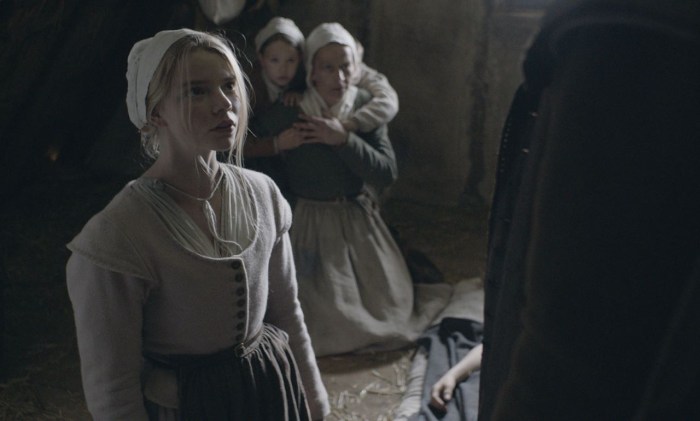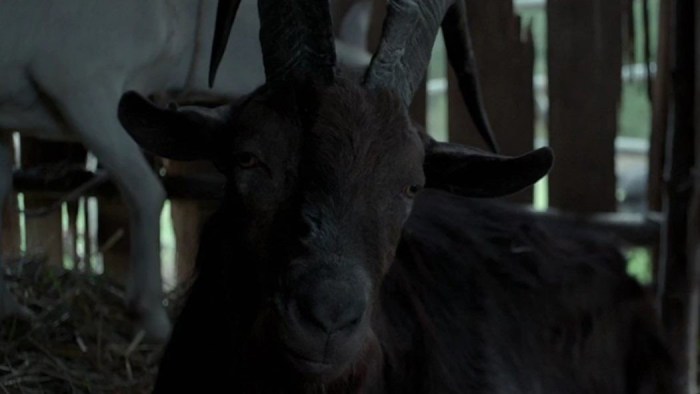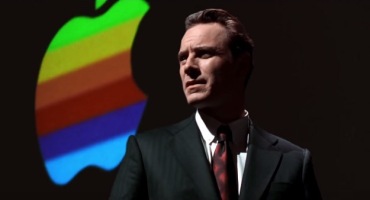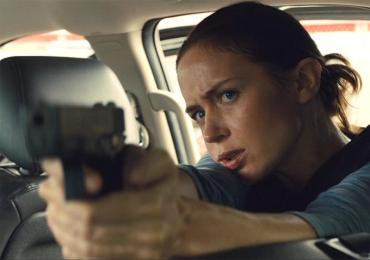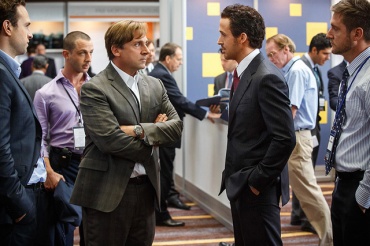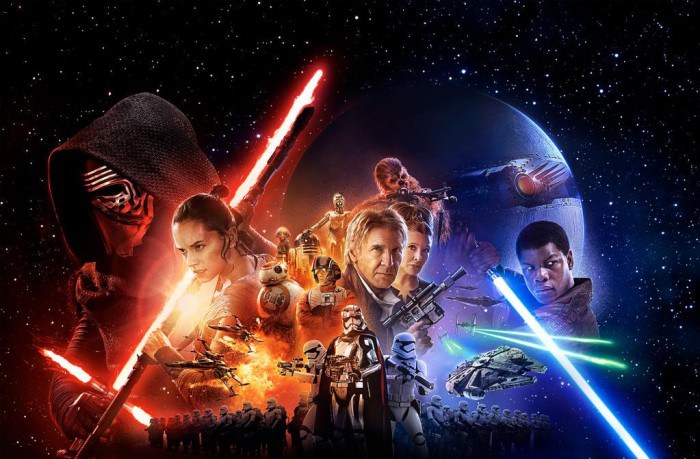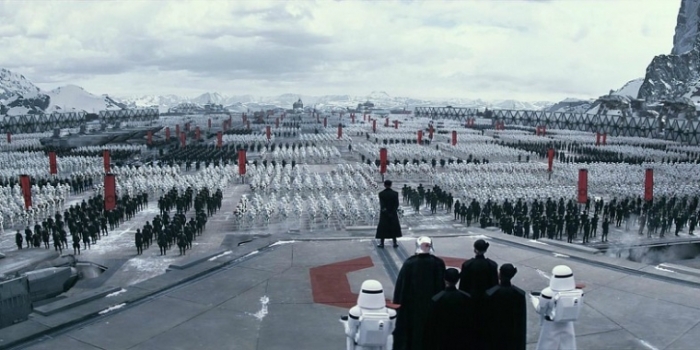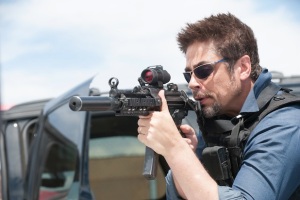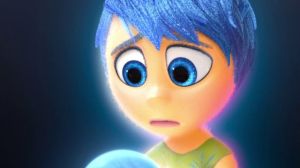Well, it’s that time…my favorite season for movie watching. Fall is when studios tend to release their better films (i.e. the ones they think’ll make a splash during the end-of-year awards). Prestige season begins in earnest for me on September 18 — seven days and counting — so I’ve compiled a list of the films I’m most looking forward to.
September 18 sees the release of “Black Mass” — the story of real-life mobster, Whitey Bulger. Johnny Depp plays Bulger, and judging by the trailer, this looks like a welcome return to his more menacing and nuanced work (think “Donnie Brasco,” which happens to be another crime film). On top of that, I was a fan of director Scott Cooper’s first feature, “Crazy Heart.”
Also out on September 18 is “Sicario.” (It’s in limited release that weekend and goes wide on September 25.) The trailer for this drug war drama makes it look like a real nerve shredder. It’s from another promising young filmmaker, Denis Villeneuve. After “Prisoners,” itself a lesson in suspense, this seems like another fruitful collaboration with could-make-a-dumpster-look-great cinematographer, Roger Deakins. The cast is spectacular as well, headlined by Emily Blunt (in full bad ass mode), Benicio del Toro and Josh Brolin.
I haven’t liked a Ridley Scott film in several years — really since the Director’s Cut of “Kingdom of Heaven” — but I’m hoping that will change on October 2. “The Martian” is about an astronaut left for dead and his struggle to survive on…you guessed it…Mars. Scott’s susceptible to selecting scripts that are beneath his talent, but Drew Goddard (of “Cabin in the Woods” and “Daredevil” Season 1) is the screenwriter here. And again, we have a phenomenal cast: Matt Damon, Jessica Chastain, Sean Bean, Kate Mara, Chiwetel Ejiofor, Kristen Wiig, Jeff Daniels, and Michael Peña.

And then there’s the pairing of screenwriter Aaron Sorkin and director Danny Boyle, whose film “Steve Jobs” hits screens on October 9. The former is a self-described writer of “People talking in rooms” and the latter’s known for his bold and vibrant filmmaking. Michael Fassbender plays the titular tech genius. He’s one of my favorite actors working, but I’m mostly excited to see what Sorkin and Boyle bring out in one another.
The weekend of October 16 is stacked.
First up is “Beasts of No Nation.” It’s directed by Cary Joji Fukunaga, the man behind the first season of “True Detective.” It stars Idris Elba as an African warlord recruiting children into a civil war. The film is getting a very limited theatrical release, but it’s also going to be available on Netflix streaming the same day it hits screens. I love “True Detective,” so I’ll see anything Fukunaga touches. The positive buzz for the film has only gotten me more excited.
“Bridge of Spies” comes out the same day. This one’s from a young, upstart filmmaker named Steven Spielberg. (I see big things for this guy. Very talented.) The director’s track record has been spotty lately, but even mid-tier Spielberg is better than most. I’m excited to see him reunite with Tom Hanks, who plays a lawyer focused on rescuing a US pilot who went down over the Soviet Union. Oh, and the Coen Brothers have a screenwriting credit!
But the movie I’ll see first that weekend is “Crimson Peak.” Guillermo del Toro is one of my favorite directors working, and this marks his return to the haunted house genre. If you haven’t seen “The Devil’s Backbone,” you should remedy that right away. Based on the trailer, the visuals looks as lush and vibrant as you’ve come to expect from del Toro. Yet another great cast here with Mia Wasikowska, Tom Hiddleston and Jessica Chastain.

And finally, “Room” comes out in limited release the same day. I’ve heard good things about the novel on which the film is based, but there’s one reason I’m really excited for this one…and her name is Brie Larson. She gave a stunning performance in “Short Term 12” (actually my favorite performance of 2013). I was disappointed to see her relegated to Love Interest in “The Gambler,” but it looks as though “Room” will be another opportunity for her to flex her acting muscles.
November 6 brings the latest entry in the James Bond franchise, “Spectre.” “Skyfall” director Sam Mendes returns here. Aficionados will recognize Spectre as the nefarious organization that reared its head in early Bond films. The inclusion of talent like Christoph Waltz, Léa Seydoux and Andrew Scott is very exciting. The only thing that gives me pause is that, after the release of “Skyfall,” Mendes stated he’d said everything he had to say about Bond. Presumably, the studio offered him enough money to keep talking. That’s usually not the best reason for a director to sign on, but based on the strength of the previous film, I’ll be there opening weekend.
On November 20, “Carol” gets a limited release. Director Todd Haynes tackles a similarly taboo subject matter as his own “Far From Heaven.” This one’s about a younger woman falling in love with an older woman in 1950s New York. Cate Blanchett and Rooney Mara star, and they’re two of the best actresses working today. The film’s screened at festivals to rave reviews.
This year brings not one but two Pixar films. After the summer’s “Inside Out,” I’m really looking forward to “The Good Dinosaur” (November 25). The premise is pretty basic — What if the dinosaurs didn’t go extinct? (The trailer plays this out in a hilarious visual gag.) When the animation studio is on its game, there’s nobody better. The film’s had a troubled production, with Disney announcing in June that nearly the entire voice cast had been scrapped. Still, “Inside Out” felt like a real return to form for Pixar, so I’m hoping their latest picks up where it left off.
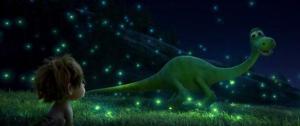
The performer pairing I’m most excited for is Michael Fassbender and Marion Cotillard in “Macbeth,” which is getting a limited released on December 4. The trailer is gorgeous. I’ve already talked about how much I like Fassbender, but Cotillard is every bit his equal (if not superior). The prospect of these two playing off each other in a Shakespeare adaptation sounds fantastic.
Finally, we come to it — the main course! “Star Wars: The Force Awakens” is unleashed on December 18. When the first teaser was released last November, I wrote about my reluctance to get excited for this new trilogy. But as we’ve gotten closer to release and with the second teaser, my hesitance has almost completely faded…except for a minor concern that the film may delve into fan service (see: director JJ Abrams’s own “Star Trek Into Darkness”). But I’m so ready for this!

(The next two are technically Winter titles, but what’s dinner without a little dessert?)
On December 25, Quentin Tarantino’s “The Hateful Eight” will go into limited release (with a wide release soon to follow). It’s about a group of bounty hunters — and a valuable quarry — holed up in a cabin during a blizzard. Tarantino is one of the most consistently excellent filmmakers working. I’m excited by the prospect of him tackling something with a limited setting. If “Inglorious Basterds” was any indication, with its farmhouse and tavern sequences, he knows how to wring suspense out of a confined space. And there’s a great cast: Kurt Russell, Samuel L. Jackson, Jennifer Jason Leigh, Michael Madsen, and Bruce Dern.
Alejandro González Iñárritu’s follow up to “Birdman” also comes out on Christmas Day — “The Revenant.” The trailer is tense as hell, and the images (composed by two-time Oscar winner Emmanuel Lubezki) are breathtaking. There looks to be an extraordinary amount of movement and coordination within the frame, as you’d expect from the DP of “Children of Men.” Leonardo DiCaprio and Tom Hardy star.
So those are the movies I’m most looking forward to! What about you? What are you excited to see this Fall?

